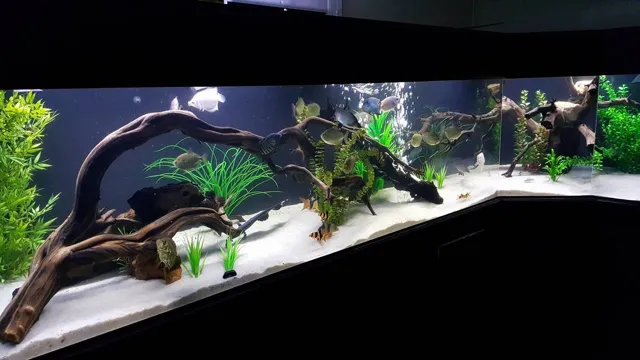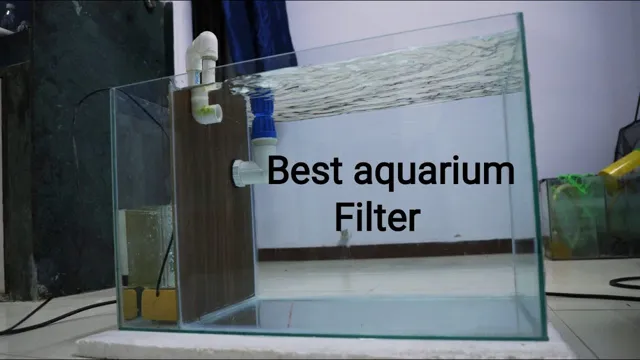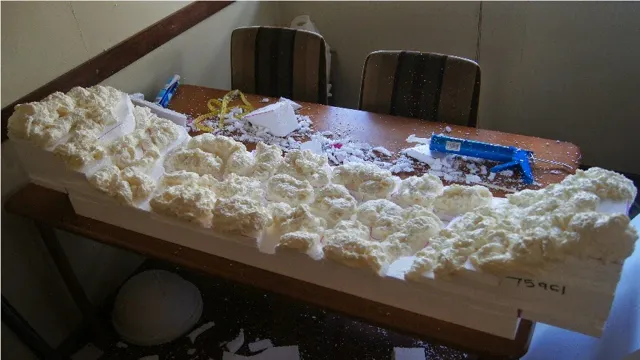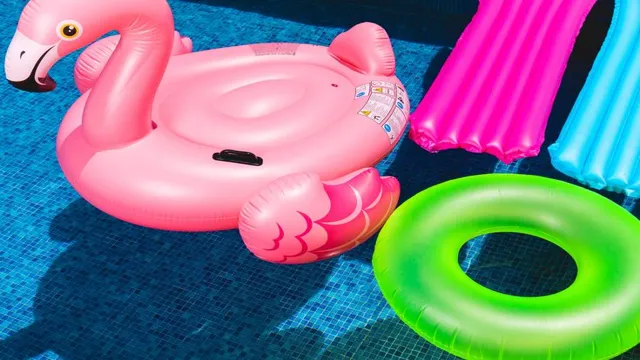Driftwood is a popular addition to aquariums due to its natural appearance and the benefits it provides to aquatic species. While it may seem like a simple task to pick out driftwood for your aquarium, there are several considerations to keep in mind. Not all driftwood is created equal, and picking the wrong piece could have negative consequences for your aquarium inhabitants.
From understanding the types of driftwood available to knowing how to properly clean and prepare it for use, there is much to consider when choosing driftwood for your aquarium. In this blog, we’ll explore the key factors to consider when selecting driftwood for your aquarium to help ensure the health and happiness of your aquatic friends.
Why Choosing the Right Driftwood Matters
When setting up an aquarium, driftwood can be an attractive addition that also serves as a natural hiding spot for fish. However, it’s essential to choose the right driftwood to ensure the safety and health of your aquatic pets. Choosing driftwood that is too soft or too hard can harm the fish or alter the water chemistry.
Softwood driftwood may release too many tannins and lower the pH, while hardwood driftwood may raise the pH and water hardness. It’s also important to select driftwood that hasn’t been treated with any chemicals or pesticides that can harm the fish. Therefore, when looking to buy driftwood, it’s crucial to choose from a trusted seller and select driftwood that is safe and appropriate for your aquarium.
By following these guidelines, you can select driftwood that will create an ideal environment for your fish and enhance the overall look of your aquarium.
Ensuring Safety for Your Fish
When it comes to ensuring the safety and well-being of your fish, choosing the right driftwood can make all the difference. Not all driftwood is created equal, and some types can actually be harmful to your aquatic pets. Before adding any driftwood to your tank, it’s important to do your research and choose a piece that is safe and suitable for your fish.
Some types of driftwood may release tannins or other chemicals into the water, which can affect the pH levels and overall health of your fish. Look for driftwood that has been specifically treated or cured for aquarium use, or consider boiling the wood yourself to remove any potential dangers. By taking the time to carefully choose the right driftwood, you can ensure a happy and healthy environment for your beloved fish.

Creating the Desired Aesthetic
When it comes to creating the perfect beachy, coastal aesthetic in your home, choosing the right driftwood is key. Not all driftwood is created equal – some may be too small or too large for your intended use, while others may not have the characteristic weathered look that makes driftwood so desirable in the first place. Plus, not all types of wood will work well with your current decor or color scheme.
That’s why it’s important to take your time and carefully select the right pieces of driftwood for your DIY projects and interior design goals. By doing so, you can create a cohesive and beautiful look that truly captures the essence of the seaside. So before you embark on your next driftwood project, be sure to consider all of the different factors that can impact your choice of wood, from size and shape to texture and coloration.
Maintaining Water Quality
Maintaining the water quality in your aquarium is essential for the health and well-being of your aquatic pets. One crucial factor in achieving this is choosing the right driftwood. Most aquarium hobbyists prefer driftwood because it provides a natural aesthetic to their tank, mimicking the natural environment of their fish.
However, not all driftwood is created equal. Choosing the right driftwood is essential because poor quality driftwood can release tannins that discolor the water and create a breeding ground for harmful bacteria and parasites. It’s important to select driftwood that has been cured and dried properly to prevent this.
Look for driftwood that is free of mold and has a natural wood smell. Soaking driftwood before adding it to the aquarium will also help eliminate any remaining tannins. By selecting the right driftwood, you can enhance the beauty of your aquarium while also maintaining water quality for a thriving aquatic ecosystem. (See Also: How to Grow Duckweed in Aquarium: A Comprehensive Guide for Aquarists)
Factors to Consider When Choosing Driftwood
When it comes to choosing driftwood for your aquarium, there are a few factors to consider. First and foremost, you’ll want to make sure that the driftwood itself is aquarium safe. This means that it hasn’t been treated with any harmful chemicals or pesticides that could harm your fish or other aquatic life.
Additionally, you’ll want to consider the size and shape of the driftwood, as well as its overall aesthetic appearance. Some types of driftwood may be more suitable for certain aquarium setups than others, depending on the types of plants and fish you have. Finally, it’s important to consider the age and quality of the driftwood.
Older driftwood may be more prone to breaking or deteriorating over time, while newer driftwood may be more sturdy. By taking these factors into consideration, you can ensure that you choose the perfect piece of driftwood to enhance the beauty and natural feel of your aquarium setup.
Type of Wood
When it comes to choosing driftwood for your aquarium or home decor, it’s important to consider the type of wood you’re using. Not all driftwood is created equal, and different types of wood can affect the overall look and health of your aquarium. Hardwood, for example, is a popular choice as it is durable and long-lasting, while softwood is more delicate and prone to decay over time.
Another factor to consider is whether or not the wood has been treated with chemicals or pesticides. Using untreated or organic wood is always the safest and most eco-friendly option. So, before you start decorating with driftwood, make sure you’ve taken the time to consider the type of wood you’re using and how it will impact your overall aesthetic and the well-being of your aquatic pets.
Size and Shape
When it comes to choosing the right driftwood for your aquarium, there are a few important factors to consider. The size and shape of the driftwood will play a significant role in how it functions in your aquarium. When selecting driftwood, you’ll want to ensure it’s the right size for your tank and doesn’t overcrowd the space.
Additionally, the shape of the driftwood will dictate how it can be positioned in the aquarium and impact water flow and filtration. Choosing a piece of driftwood with unique twists and turns can create interesting areas for fish to explore and provide a naturalistic aesthetic to your aquarium. Ultimately, selecting the perfect piece of driftwood requires balancing size, shape, and functionality in your aquarium.
Texture and Appearance
When it comes to choosing driftwood for your aquarium or home decor, there are a variety of factors to consider, including texture and appearance. Texture is an essential element to consider, as it can affect the overall look and feel of your setting. Driftwood with a rough texture can add a rustic and natural feel, while smoother driftwood can provide a more modern look.
Additionally, it’s important to consider the overall appearance, such as the color and shape of the driftwood. Some driftwood may have unique twists and turns that can add a whimsical touch to your setting. Overall, when choosing driftwood, make sure to consider both the texture and appearance to ensure you get the right look for your desired aesthetic.
Age and Condition
When selecting driftwood for your aquarium, there are a few factors to consider, one of which is age and condition. Older driftwood tends to have a more weathered and natural appearance, which may be preferred by some aquarists for its aesthetic appeal. Additionally, older driftwood has had more time for any chemicals or toxins to leach out, making it a safer option for your aquatic pets. (See Also: How to Get Rid of Alkaline in a Freshwater Aquarium: Effective Tips)
However, older driftwood may also be more brittle and prone to breaking, so it’s important to assess its condition before adding it to your tank. Newer driftwood may be sturdier, but it may also have a more uniform appearance that may not blend well with other decor in your aquarium. Ultimately, the age and condition of the driftwood you choose will depend on your personal preferences and the specific needs of your aquatic environment.
Preparing the Driftwood for Your Aquarium
When choosing driftwood for your aquarium, there are a few things to consider to ensure that you get the best possible pieces for your tank. Firstly, you need to make sure that the driftwood is safe for your fish and plants. Avoid pieces that have any signs of rot, mold, or insect damage, as these can release harmful toxins into the water.
It’s also important to choose pieces that are the right size for your tank, as oversized or undersized pieces can look out of place and even cause damage to your fish. When you have chosen the right pieces, you need to prepare them before adding them to your aquarium. This involves scrubbing them thoroughly with a brush and boiling them in water for several hours to remove any bacteria or other contaminants.
By taking the time to choose and prepare your driftwood properly, you can create a beautiful and safe environment for your aquatic pets.
Boiling or Soaking the Wood
Preparing driftwood before introducing it to your aquarium is crucial for the health of your aquatic pets. Boiling and soaking are two common methods used to sterilize and disinfect the wood. Boiling is effective in killing any bacteria or parasites that may be on the surface of the driftwood.
Soaking, on the other hand, is a gentler approach that can be used for delicate species of wood that may crack if boiled. The process involves placing the wood in a container of warm water and letting it sit for days. During the soaking process, the water should be changed multiple times a day, and a water conditioner should be added to prevent the growth of harmful bacteria.
Once the wood has been boiled or soaked, it’s important to let it dry thoroughly before it’s placed in the aquarium. This process can take several days, so be sure to plan ahead. Preparing driftwood properly will help create a safe and healthy environment for your aquatic pets to thrive in.
Scrubbing the Wood
Scrubbing the wood is an essential part of preparing driftwood for your aquarium. When you first get your driftwood, it’s important to give it a thorough scrub to remove any dirt, debris or impurities that could harm your fish. Start by rinsing the wood with hot water to help loosen any dirt.
Then, using a stiff brush, scrub the wood in a back and forth motion, and be sure to get in all the crevices and uneven surfaces. If you have any stubborn stains, you can use a bit of bleach to help remove them, but be sure to rinse the wood thoroughly after. Once you’re done scrubbing, give the wood a final rinse with clean water and let it air dry completely.
By properly cleaning and preparing driftwood, you can help ensure a healthy and safe environment for your aquatic friends.
Conclusion
In summary, choosing driftwood for your aquarium is like picking a new friend- it’s all about finding the perfect fit. Look for pieces that complement the aesthetic of your tank, provide plenty of hiding spots for your aquatic buddies, and won’t leach harmful substances into the water. And just like with friends, don’t be afraid to shop around and take your time- the right piece of driftwood is worth waiting for!” (See Also: How to Beat Algae Aquarium: Tips and Tricks for a Clear and Pristine Tank)
FAQs
What are the benefits of using driftwood in an aquarium?
Driftwood provides hiding spots for fish, helps lower pH levels, and can be a source of natural food for some species.
How do I choose the right size of driftwood for my aquarium?
The size of the driftwood should be proportional to the size of your tank. It should not be too big to overcrowd the tank or too small to be unnoticeable.
Can all types of aquarium fish live with driftwood?
Most fish species can live with driftwood, but some may require a specific type of driftwood or may not be compatible with it at all. It’s important to research the specific needs of your fish before introducing driftwood to the tank.
How long does it take for driftwood to sink in an aquarium?
The time it takes for driftwood to sink in an aquarium can vary depending on the size and type of driftwood. Some driftwood can sink immediately, while others may take several weeks or even months.
Is it safe to use driftwood in an aquarium?
It is generally safe to use driftwood in an aquarium. However, it’s important to properly clean and sterilize the driftwood before adding it to the tank to prevent the growth of harmful bacteria or parasites.
How often should I replace my driftwood?
Driftwood can last for several years in an aquarium if it is properly cared for. However, if the driftwood becomes too decayed or begins to release harmful substances into the water, it may need to be replaced.
Can I use driftwood from a natural source for my aquarium?
It is possible to use driftwood from a natural source in an aquarium, but it’s important to properly clean and sterilize it to prevent the introduction of harmful bacteria or parasites. It’s also important to ensure that the driftwood has not been treated with any harmful chemicals.







